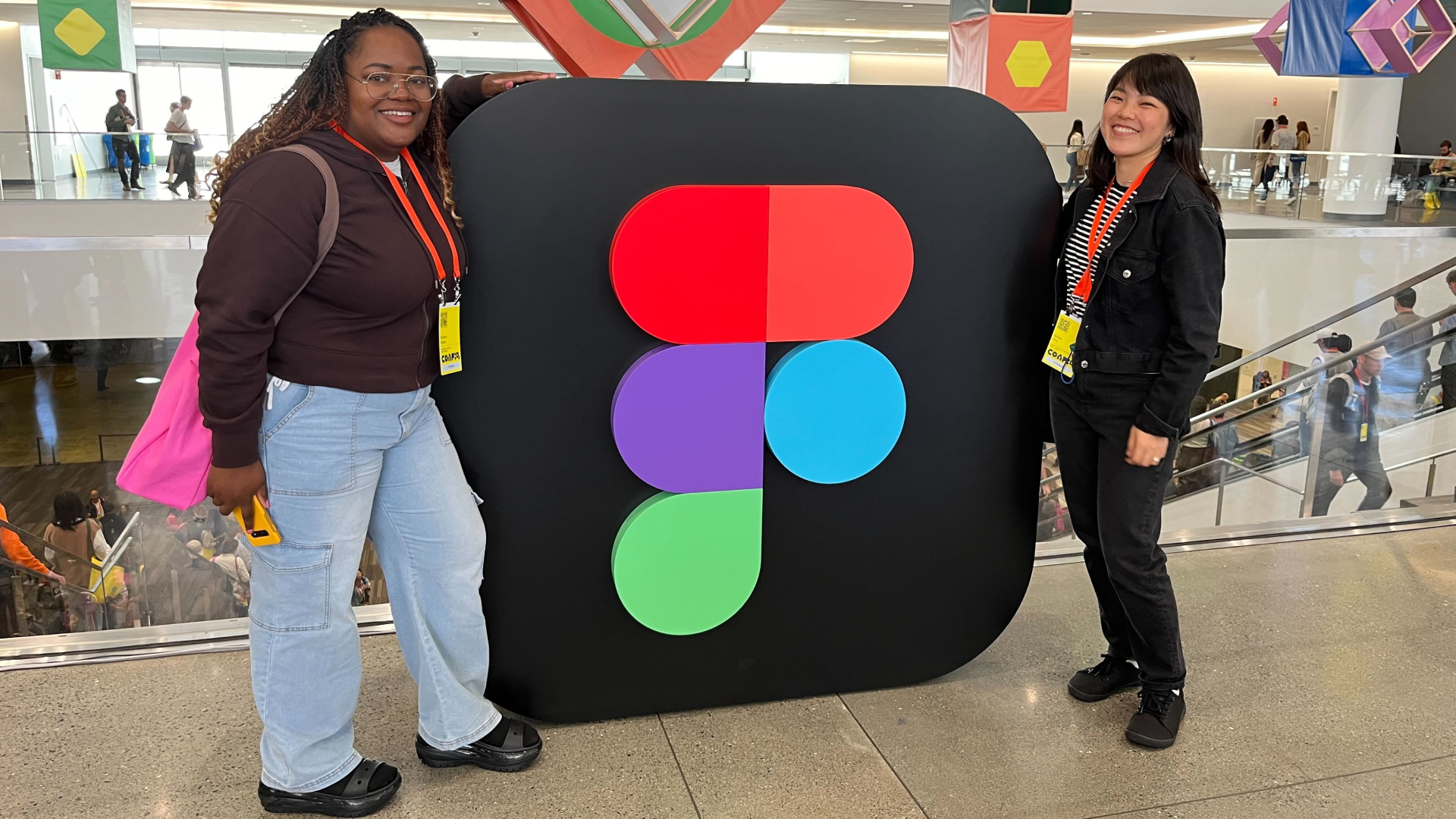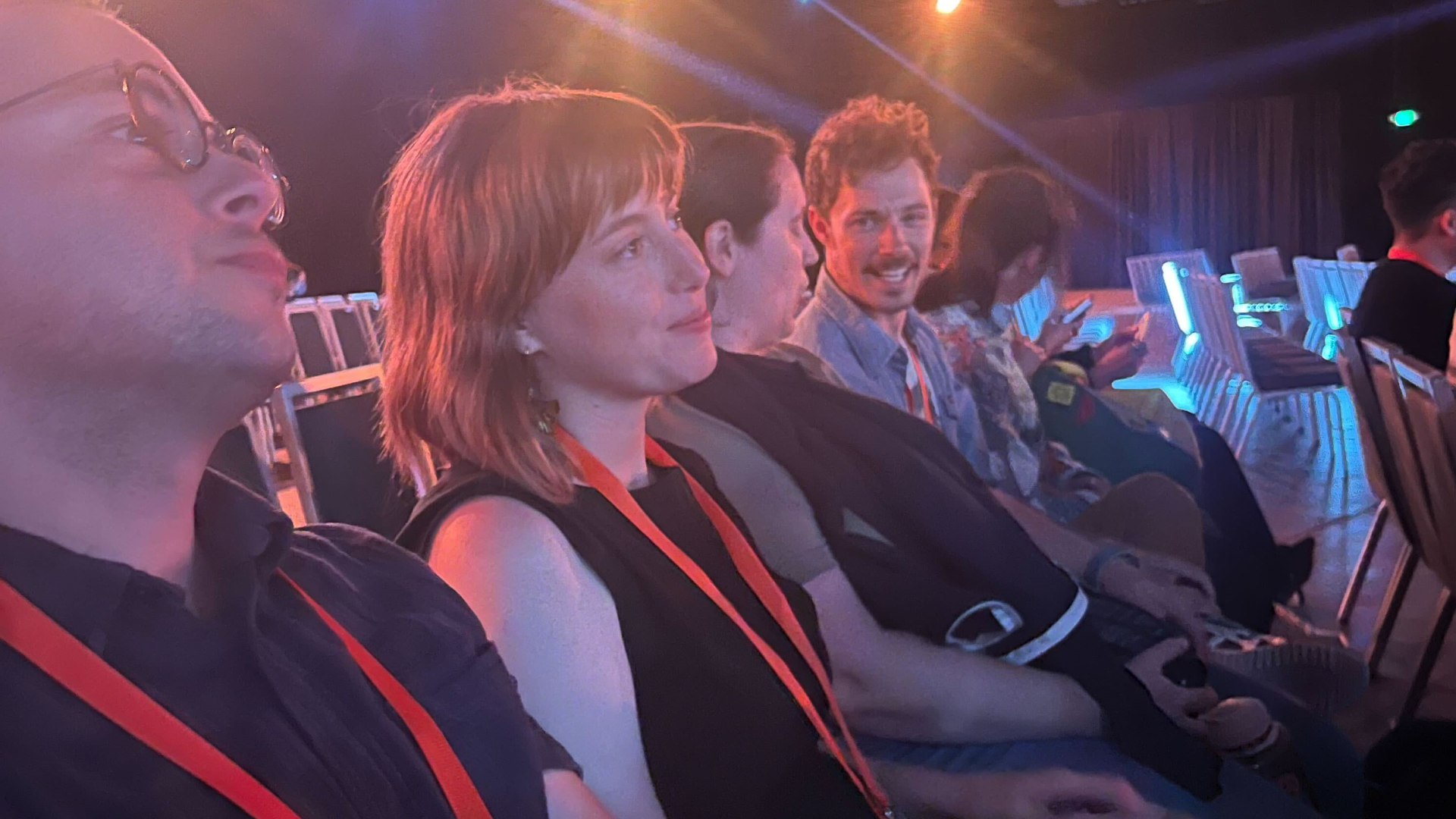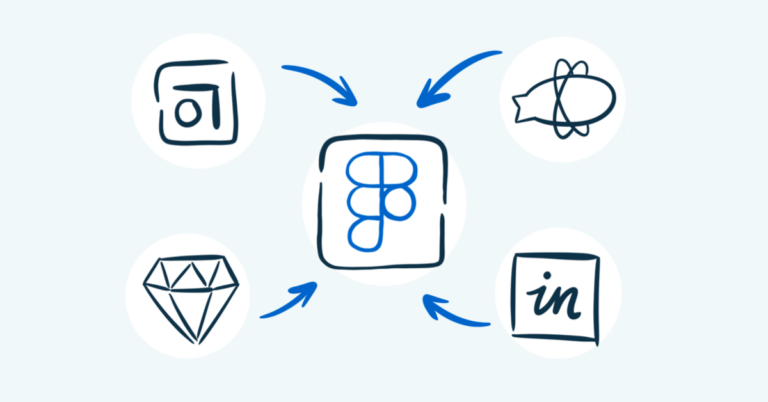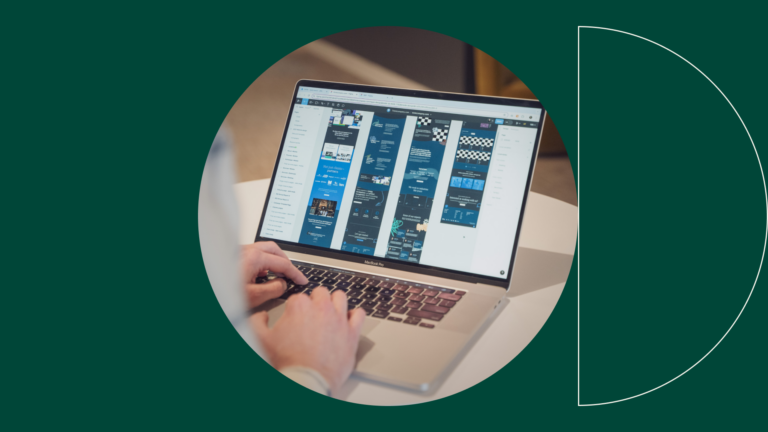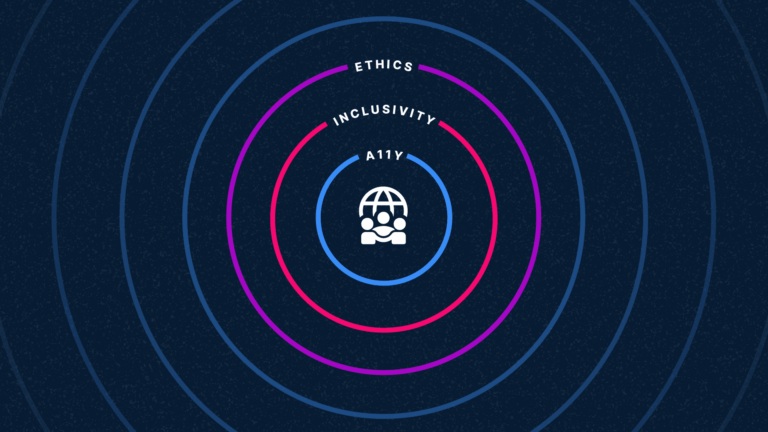Designing with intention: Our Config 2024 takeaways
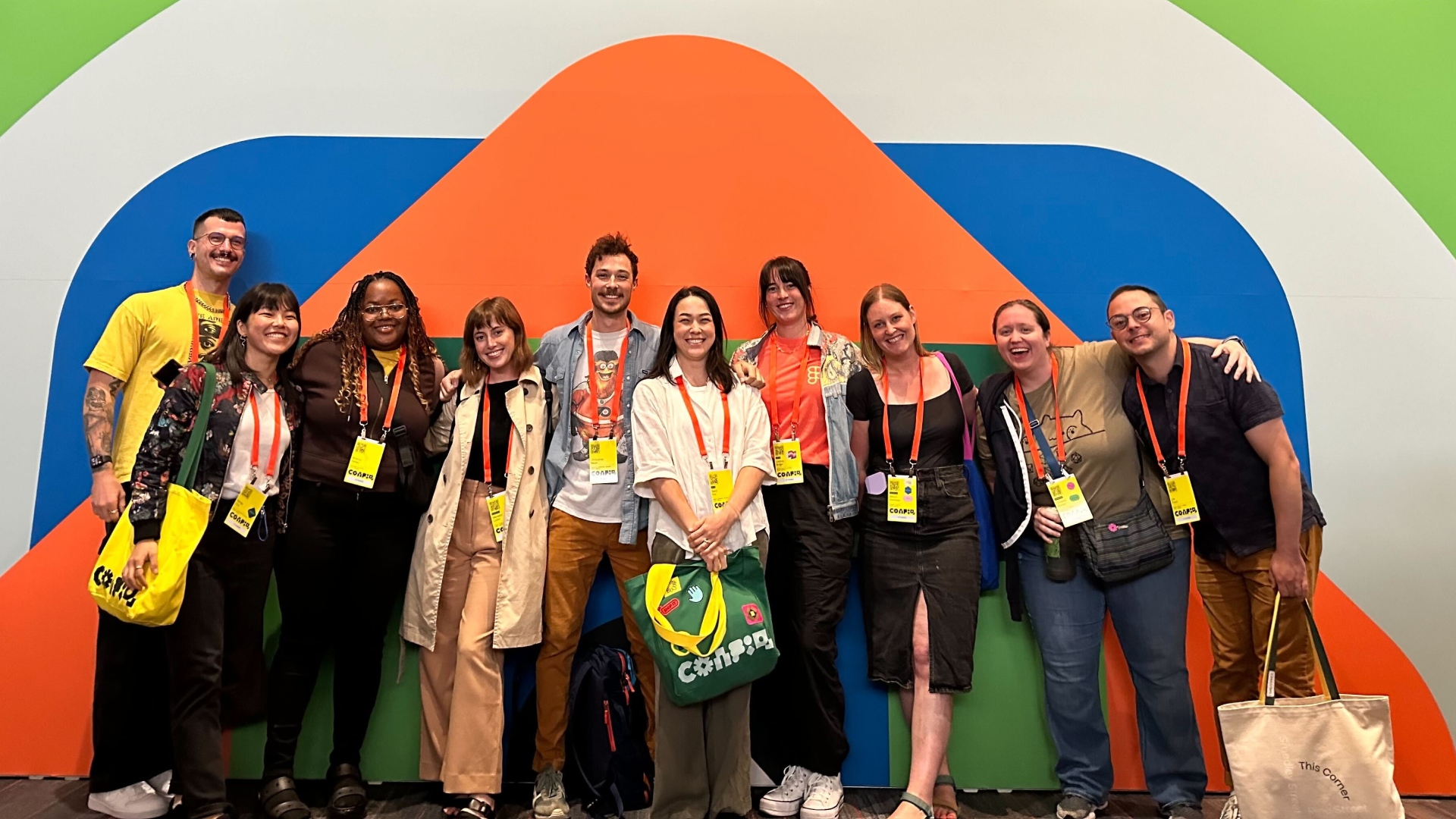
It’s no secret that we’re huge Figma fans. So, what could be better than getting together with thousands of designers, developers, project managers, and other UX practitioners who are passionate about building great products, processes, and teams? A group of 10 Thinkers attended Figma’s two-day conference in San Francisco this year, and they left with a few common takeaways on the important considerations for design leaders today.
5 considerations for designing intentionally
With over 75 speakers, 50 sessions, and 8,000 attendees, Config had a lot to offer. Below are the 5 most prominent takeaways from our team that can help practitioners and product leaders succeed. Let’s dive in.
1. Give AI a seat at the kids table
To no one’s surprise, AI was a central part of many discussions at the conference. But it’s important to break through the noise and understand how AI can be actionable now, how you can prepare for its future, and ultimately how your teams will ensure it supports human-centered design appropriately.
Thinker Allison Drechsler, Design Manager, knows there are effective uses of AI at our fingertips: “You should leverage AI to help maximize efficiency so that your team can think critically as real humans about the personalized experience with customers that set your business apart.” She prefaces that the intention is not to replace moments of creative and unique human thought, but allow more room for it.
Figma’s recent release of beta AI tools is intriguing. Make Designs in the Actions panel will generate component options and UI layouts from text prompts. Describe what you need, and it will provide you with a first draft. Much like generative AI for content production, these new tools can help jumpstart the creative process, but a human touch will be key to ensuring the outcome provides value.
Remember, “it’s Artificial Intelligence, not Artificial Wisdom.” Think Principal UX Engineer Christine Martino shared after digesting much of the AI conversation that “our core values matter more now than ever because AI has the ability to empower or harm equally, at unprecedented scale and speed. AI is a mirror reflecting humanity. If we invite AI to have a seat at the UX table, we must influence it to re-enforce values of compassion, kindness, and remembering the person engaging with the product.”
Don’t get us wrong, it is exciting to see the opportunities for efficiency that AI is offering our teams and clients. Thinker Daniella Mosca, Experience Designer, shared that “using advanced, AI-integrated features like Code Connect and Figma Slides has the potential to set some businesses apart by streamlining design workflows and delivering superior user experiences, faster than competitors.” She looks forward to the admin benefits that the new AI features in Figma slides provide by adjusting professional presentation for tone and audience preferences, and was impressed by its user-friendly functionality. But, as AI continues to advance at high speeds, we’re staying informed while always approaching these tools and features as people powered, and AI enabled.
2. Human-centered design is more important than ever
With AI conversations around every corner, it’s only natural that a room full of UX leaders made sure to re-center the conversations around humans.
It was clear to Christine Martino that “clients should be thinking about user research not as a ‘nice to have,’ but an essential step to ensuring their experiences remain and feel human.” Our projects are always grounded in research so that we can ensure we’re designing to meet user needs. With the potential of AI-assisted design and other AI involvement, it makes sense to double down on user research. Also, “findings from UX research could be used to help train AI models versus using cheaper synthetic models that are likely using junk data.”
In a conversation about human-centered design, it’s easy to get stuck in the weeds and focus on solutions or end products rather than the overall vision. Going into Config with a project management lens, Thinker Lee Frank, Senior Project Manager, found Lane Patrick Shackleton’s talk, Turning ambiguity into clarity: learnings and principles insightful. Lee knows that “everyone works better if they are aligned on the overall vision instead of focused on their siloed tasks.” It’s important for teams to understand the full picture versus hyper-focusing on their individual tasks—designing a project plan that keeps the needs of the humans on the project in mind will be much more successful.
3. Design systems: There’s room for structure and innovation
It’s Config; of course we’re going to talk about design systems.
We’re also big fans of Figma, so our design systems experts were there for any (and all) discussion about them. Talks ranged from ways to improve adoption to taking a more critical look into how designers might lean on design systems too much, losing creative solutions along the way.
Thinker Chris Nappi, Principal Experience Designer, found Cam Worboys, Head of Design, OS at Cash App, The broken promises of design systems to be most intriguing. Common benefits of design systems include speed, cohesion, and quality. All things that help businesses work better. But what happens when we get too wrapped up in designing in cycles within the parameters of a design system? Worboys drove home that “great ideas never start with a system,” and Chris agrees that “the purpose of a good system is to help designers make better decisions. But, the only way to create a quality outcome is through decision making and doing the right things, not just following the pattern, no questions asked, while racing to the finish line.”
Speaking of speed—speed to market is a priority for most of our clients. This is why we always recommend implementing a design system, but they should be used in support of the design process, not to replace it. Cohesion is vital to brand recognition (and to ensure less confusion), but “it’s possible to be both cohesive and expressive” Chris shared. This comes full circle to our AI conversations above. A design system is only as good as its inputs, which are directly attributed to a designer’s creativity and innovation.
4. Accessibility, ethics, and inclusive design are foundations, not add-ons
Grounded in accessibility, it’s no surprise that Thinkers flocked to “Pitching accessible design like a pro” by Tregg Frank from Divinate. And while they were excited to hear that Figma’s new AI features like visual search and automated layer renaming aim to improve accessibility for designers, this talk resonated with our team because of our deep experience advocating for accessibility as an important business investment.
In the talk, Tregg shared that “accessibility is literally just user experience… it’s just good design.” When entering conversations with clients, or if you’re a product leader looking for executive buy-in, you should shape the pitch differently. Empathize with the people you’re working with (stakeholders, leadership) and shape the pitch to their needs. Thinker Sohee Cha, Senior Experience Designer, resonated with Tregg’s point that designers stress the importance of empathy in UX, but often don’t empathize with their teammates, clients, or stakeholders. Molding the accessibility conversation to align with the needs of those you’re working with is a great way to show its importance—and value.
After all, accessibility is an investment and organizations want a return on investment. Not convinced? Sohee also appreciated these reminders from Tregg:
- 1.3 billion people, i.e., 16% of the world, have a disability.
- There is no demographic for disability. It’s inaccurate to say that “our users aren’t disabled.”
- There are accessibility requirements to do business in Europe (European Accessibility Act).
- You have to be accessible to take federal funding (Section 508 of the Rehabilitation Act).
- Including accessibility in the beginning can save your business money. Making something accessible later is much more expensive.
Given the vast business benefits, it’s more clear than ever that we must make accessibility, ethics, and inclusive design foundational in product design in order to succeed. If you’re looking for additional resources to bring this topic to your organization, you can read more about investing in accessibility for your business products.
5. “Software shapes [our] culture”
Our clients want solutions and tools (software) to help speed business processes. To accomplish that, we take complex solutions and make them more simple for users. Thinker Sohee Cha found inspiration in Andy Allen’s talk, “Serious Play,” prompting her to take a step back and consider the bigger picture. While simplified, easy-to-use solutions are the goal, bringing richness back into software is in our future.
Allen shared how video games have been the driving force for progress in software. They’ve spurred and inspired collaboration, easy onboarding, narratives, business models—like in-app purchases and season passes—and AI has been incorporated into video games for decades through NPCs and generative systems. Sohee’s big takeaway? “Software is not just a tool that solves problems. It’s intertwined into our everyday life so much so that it shapes how we live—and don’t we want to live diverse and purposeful lives? As designers, it’s our job to make sure we’re creating unique and creative software that does just that.”
Config 2024: It all comes down to designing with—and for—humans
Config was filled to the brim with insightful talks by industry leaders. The common thread: Humans. Whether implementing new AI features, working with design systems, or building software, Thinker Sarah Frei, Senior Experience Designer, reminds us “that to achieve anything together, we must remember to connect with one another on a human level.”
Thank you to our team of Thinkers who contributed to this piece: Allison Drechsler, Christine Martino, Chris Nappi, Daniella Mosca, Lee Frank, Sarah Frei, and Sohee Cha.
